Select Language
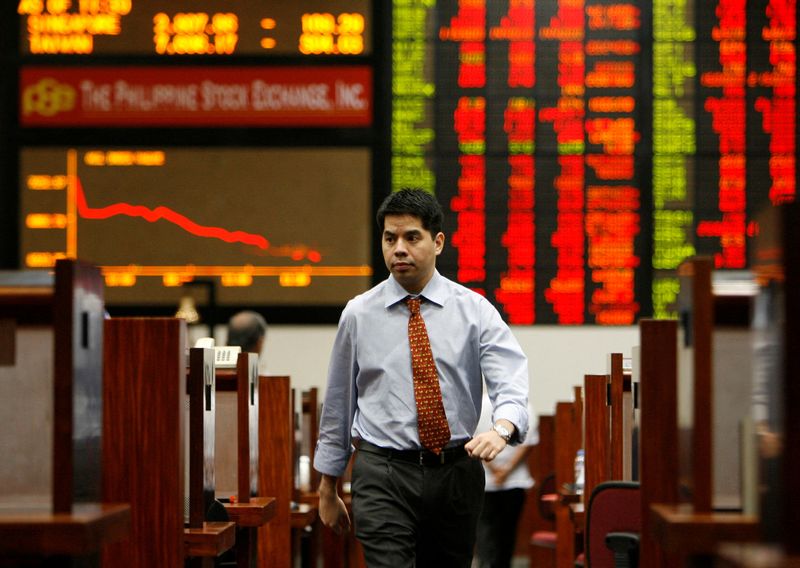
Global shares fell, while safe havens such as bonds and gold rallied on Tuesday, as investors grew uneasy over mounting tensions between the U.S. and China ahead of talks between the two countries aimed at striking a durable trade deal.
Markets had earlier joined the rebound from Monday’s cash session after U.S. Treasury Secretary Scott Bessent said President Donald Trump remains on track to meet Chinese leader Xi Jinping in South Korea for a two-day summit starting on October 31. But he added fuel to the fire in an interview in the Financial Times where he accused Beijing of trying to damage the global economy.
As negotiations between the U.S. and China intensify, the two nations will begin from Tuesday charging port fees on ocean shipping firms that move everything from toys to crude oil.
’ESCALATE TO DE-ESCALATE’
"Both Washington and Beijing are posturing before the November summit - escalate to de-escalate," said Marc Velan, head of investments at Lucerne Asset Management in Singapore. "Neither can afford a trade war heading into U.S. midterms."
Stocks in Europe, which have hit record highs this month, were down 0.7%, echoing weakness in Asian markets, where technology stocks got hit hard.
Futures on the S&P 500 and the Nasdaq sank 1%, suggesting there may not be a repeat of Monday’s rally, but a full reversal also looked unlikely.
"If one looks at the recent history of export controls and charges for ships docking in ports, then it’s been largely interpreted as a path towards negotiation rather than a fresh outbreak of hostilities on the trade front between the U.S. and China," Investec chief economist Philip Shaw said.
"So yes, there is uncertainty, but you’ve had a huge rally, not just in U.S. stocks, but a lot of global indices as well. And while there are still some question marks over U.S.-China trade friction, I’d interpret the latest sell-off as a bit of a correction rather than a huge stepping-up of investor uncertainty," he said.
Wall Street’s main indexes had ended as much as 2.2% higher on Monday, led by chipmakers, after Trump struck a more conciliatory tone on trade tensions with China, reversing some of the panic from Friday when Trump announced 100% tariffs on China.
MARKET RISK BAROMETERS FLASH RED
Reflecting the increased investor angst, gold reversed overnight losses and rose 0.7% to $4,140 an ounce, just shy of Tuesday’s new record of $4,179.48. In contrast, bitcoin, which tends to move in line with other risk assets, fell 3.5% to $111,793.
In the foreign exchange market, the dollar gained an edge over currencies that typically benefit when investors are feeling confident, such as the pound or the Australian dollar, which fell 0.5% and 0.9% respectively against the greenback.
The yen, which tends to act as a safe haven, strengthened 0.1% to 152.04 against the dollar after Japan’s finance minister said the country needs a new economic strategy that deals with inflation rather than deflation.
The yield on the U.S. 10-year Treasury bond was 4.02%, down 3 basis points. The U.S. bond market was closed on Monday for a public holiday.
Two-year yields, which are far more responsive to shifts in expectations for U.S. interest rates, were down 4.6 bps at 3.48%, having fallen 12 bps since Friday, marking their largest two-day fall since early August.
Analysts at Danske Bank said any escalation in the trade war would only increase the likelihood of the Federal Reserve front-loading planned rate cuts.
Traders fully expect the Fed to cut rates this month and into next year to combat a weakening labour market.
The euro dipped 0.1% to $1.1554 after French President Emmanuel Macron rejected calls to resign on Monday, as his latest government was threatened by two no-confidence motions.
Brent crude fell 1.7% to $62.63 per barrel after an OPEC report showed world oil supply is expected to closely match demand next year, a contrast from last month’s outlook, which projected a shortfall.
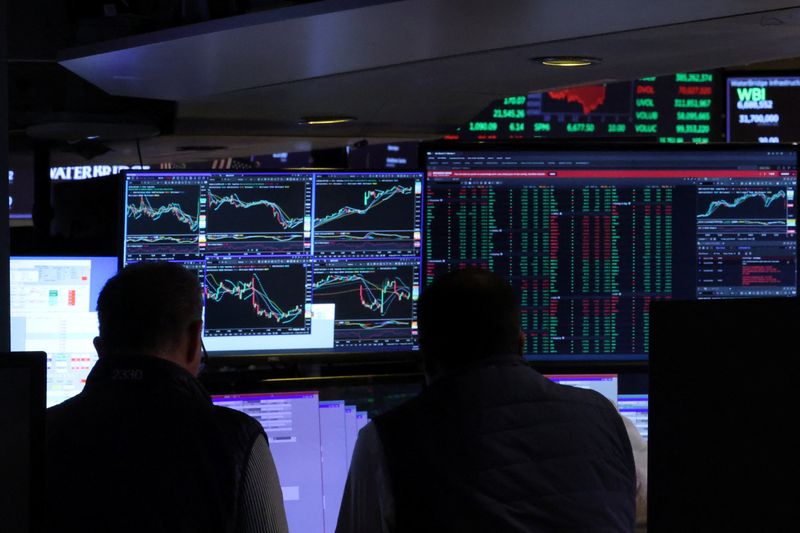
U.S. stock index futures rose on Monday following Friday’s pullback, as investors returned to risk assets after President Donald Trump’s softer tone eased concerns over renewed U.S.-China trade tensions.
Trump on Friday said he would impose an additional 100% tariff on China’s U.S.-bound exports, along with new export controls on critical U.S.-made software in retaliation for Beijing tightening rare earth restrictions.
The revived trade tensions sent the S&P 500 and the Nasdaq, both previously on track to register weekly gains, to suffer their steepest weekly declines in months.
However, in a more conciliatory tone over the weekend, Trump posted that "it will all be fine" and the U.S. did not want to "hurt" China.
China on Sunday blamed the U.S. for the escalation. However, Beijing did not roll out further countermeasures ahead of a potential meeting between Trump and his Chinese counterpart later this month, which the U.S. president threatened to cancel.
"The path for markets in the near term depend heavily on the path escalation takes," analysts at UBS Global Wealth Management said in a note.
"More generally, we think that the bull market remains intact and so pullbacks should offer an opportunity for investors, who are underallocated to equities, to consider adding long-term exposure."
The AI-driven momentum and optimism around U.S. rate cuts have helped markets in the recent months.
At 05:23 a.m. ET, Dow E-minis were up 448 points, or 0.98%, S&P 500 E-minis were up 89.75 points, or 1.36%, and Nasdaq 100 E-minis were up 462 points, or 1.89%.
Investor focus is also on the earnings season that kicks off this week with major U.S. banks including JPMorgan Chase, Goldman Sachs, Citigroup, and Wells Fargo set to release quarterly results on Tuesday.
The season will be a crucial litmus test for U.S. stock markets and it will provide fresh clues on the economy at a time when major official data releases remain delayed due to a government shutdown that is currently in its 13th day.
In premarket trading, shares of "Magnificent Seven" companies rose following Friday’s pullback. Nvidia was up 3.7%, Tesla gained 2.8%, Microsoft advanced 1.5%, while Meta and Alphabet rose 1.6% each.
In the Middle East, Hamas handed over the first group of the last surviving Israeli hostages, a key step in ending two years of devastating conflict in Gaza as part of a ceasefire deal pushed by Trump.
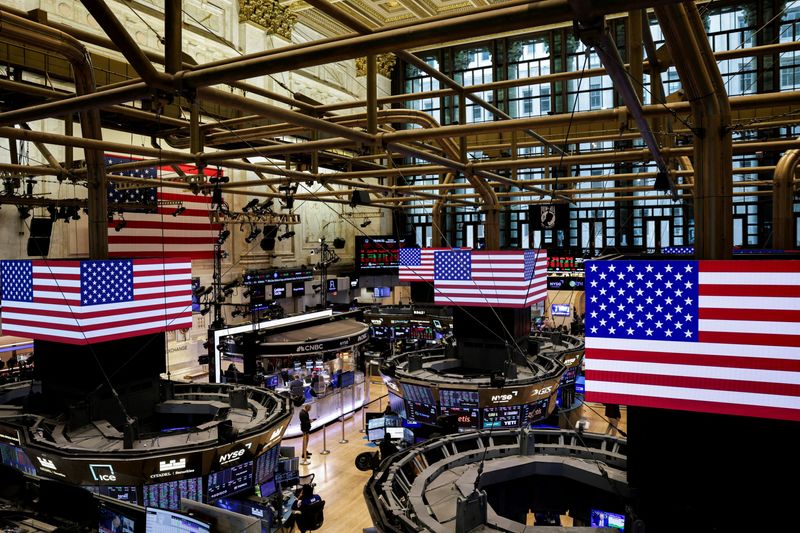
U.S. stock index futures were muted on Friday, extending a pause after a blistering rally, while investors awaited consumer sentiment data due later in the day for fresh insights into the economy.
The earnings season that begins next week will be a crucial litmus test for U.S. stock markets, but traders so far have brushed off concerns about a bubble in equities.
Some analysts expect the AI trade, mostly concentrated in tech so far, to spill over into energy and construction firms as demand for data center buildout accelerates.
"I feel pretty confident that AI will broaden out to other areas of the market. Investors are going to realize that the companies that provide or create AI are one thing, but companies that will be the beneficiaries are equally, if not more, important," said Francis Gannon, co-chief investment officer at Royce Investment Partners.
Also adding to the rally is the fear of missing out, as some analysts say the nearly three-year-old bull market still has room to run, especially if the Federal Reserve continues to lower interest rates.
Recent data has reinforced expectations for easing. While the government shutdown has delayed official releases, proxies point to a weakening labor market, with layoffs tied to the impasse likely to deepen the strain.
At 06:55 a.m. ET, Dow E-minis were up 41 points, or 0.09%, S&P 500 E-minis were up 0.5 point, or 0.01%, and Nasdaq 100 E-minis were up 1.5 points, or 0.01%.
A preliminary reading of the University of Michigan’s consumer sentiment survey, due at 10:00 a.m. ET, will be in focus. It could carry extra weight because of the official data blackout.
Investors are also weighing developments in the Middle East, where Israeli troops began pulling back from some parts of Gaza on Friday under a ceasefire deal with Hamas. Signs of easing tensions could lift sentiment by removing a long-standing overhang on equities.
Among stocks, Intel rose 1.9% in premarket trading, after TD Cowen raised its price target on the stock. Data center operator Applied Digital surged 22.1%, a day after posting better-than-expected revenue for the first quarter.
Levi Strauss shares slipped 6.6% after it forecast annual profit below analysts’ expectations.
Qualcomm fell 2.6% after China’s market regulator said the country has launched an antitrust investigation into the semiconductor manufacturer over its acquisition of Israel’s Autotalks.
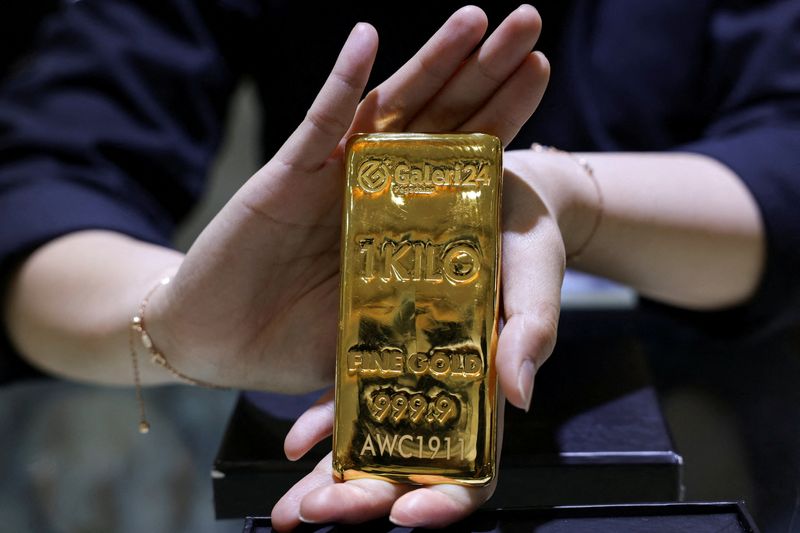
SINGAPORE (Reuters) -The surge in gold prices above $4,000 per ounce is spilling over into other precious metals on fears the Trump administration’s unorthodox economic policies will shift the prevailing trend from de-dollarisation to outright debasement of the U.S. currency.
Silver, platinum and palladium are enjoying upsized gains for the year as investors fret about a whole host of geopolitical and economic uncertainties, with U.S. President Donald Trump’s attempts to reshape global trade raising anxiety around world capitals and corporate boardrooms.
Surprisingly, gold is the worst-performing of the four precious metals this year despite a rousing 53.8% year-to-date rally making it the hottest streak for bullion in almost half a century. Platinum has had an even better year, leading the pack with an 83.6% rise year-to-date. Spot silver hit a record high of $49.57 this month after a 70.4% rally during the same period. And basking in a surge last month, palladium is up 60.5%.
In embracing what J.P. Morgan calls the "debasement trade", investors have turned to precious metals and other real assets as a safer store of value, fearing that Trump’s shakeup of the economic and political landscape and attacks on the independence of the Federal Reserve will erode the primacy of the U.S. dollar in global finance.
Taylor McKenna, a mining analyst at value fund manager Kopernik Global Investors in Tampa, Florida, expects further gains for gold, but says the rally could decelerate as prices become high enough to incentivise a search for new mines and increase future supply of the metal. "We still like gold, but we like it a lot less," he told Reuters last month.
Gold overtook the euro as the second biggest reserve asset in 2024 after the U.S. dollar, according to a report from the European Central Bank in June.
Since then, the gold rally has lifted the value of central banks’ bullion holdings above U.S. Treasury bonds. The IMF’s most recent data for the second quarter show gold accounting for a record high of 24% of total assets, up from 23.3% at the end of the previous quarter.
"Investors should not short U.S. bond or equity markets because of anything Trump does to data or the central bank," wrote BCA Research chief strategist Marko Papic. "Instead, they should go long hard assets, of which — for the time being — we like palladium the best."
"Silver’s rally is strongly linked to record-high gold prices," wrote HSBC chief precious metals analyst James Steel in a research note this week, raising the bank’s average price forecast to $38.56 per ounce this year and $44.50 per ounce in 2026.
"Gold exerts a strong gravitational pull on silver," he said, adding: "Gains in gold attract ancillary buying in silver, possibly by investors who have not taken full advantage of the gold rally."
Kopernik’s McKenna believes platinum will likely outperform as even after the rally, prices haven’t kept up with gold - despite a traditionally tight correlation between the two - and the resulting discount will create incentives that are likely to favour investment in new gold mines instead, taking supply off the market.
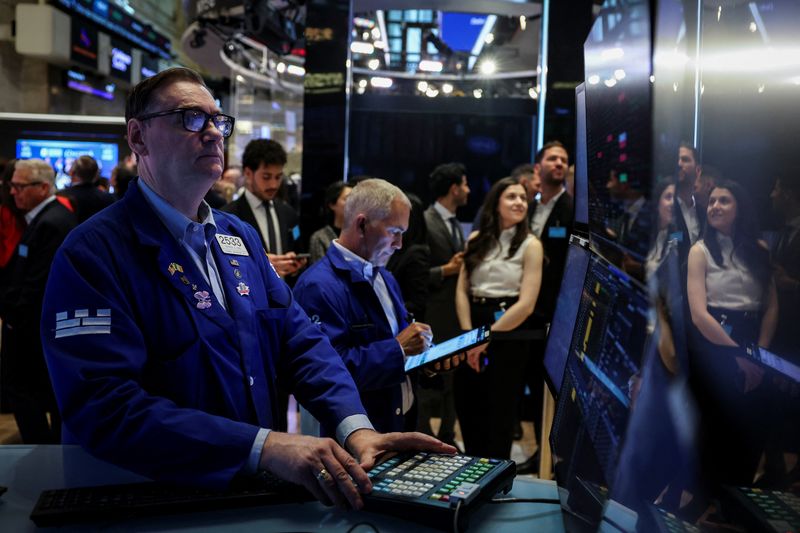
U.S. stock futures steady after equities slump in the prior session, with traders attempting to gauge mixed artificial intelligence-related headlines and a murky economic backdrop. Uncertainty over the economy and an extended U.S. government shuttering helps to fuel a spike in gold prices above the $4,000 per ounce level for the first time. The Federal Reserve is due to release minutes from its latest policy meeting, while AI-darling Nvidia is reported to be among a group of investors in xAI’s $20 billion capital raising round.
1. Futures point higher
U.S. stock futures hovered above the flatline on Wednesday, as investors assessed fresh worries over the AI boom and kept tabs on the broader economic outlook despite a lack of official data during an ongoing federal government shutdown.
By 03:48 ET (07:48 GMT), S&P 500 futures had climbed by 8 points, or 0.1%, Nasdaq 100 futures had edged up by 38 points, or 0.2%, and Dow futures had risen by 60 points, or 0.1%.
On Tuesday, equities on Wall Street retreated from recent record highs, with the benchmark S&P 500 falling by 0.4% and the tech-heavy Nasdaq Composite declining by 0.7%. The blue-chip Dow Jones Industrial Average also dipped by 0.2%.
Partly fueling these drops was a slump in shares of cloud software group Oracle, which had surged just last month on hopes that it would be a major winner in the AI race. Analysts flagged a news report in The Information, which suggested that the margin profile of Oracle’s AI cloud infrastructure business, which has been pressurized by heavy expenditures on the nascent technology, was worse than previously thought.
Still, the narrative around AI, perhaps the biggest supporter of the torrid run higher for stocks, remained intact. Shares in AMD, which announced a deal with ChatGPT-maker OpenAI earlier this week, extended a rise into a second day, while IBM advanced on a partnership with AI-name Anthropic and AI server firm Dell rallied on a raised long-term guidance.
With the prolonged shutdown leading to the delay of several key economic indicators from the government, traders have had to turn to alternative data sources to check in on the health of the American economy. These measures dented sentiment in the previous session, especially a New York Federal Reserve survey displaying a deterioration in future expectations and rising projections for inflation.
2. Gold tops $4,000 per ounce
Gold prices have soared above $4,000 per ounce for the first time, as market participants like private investors and central banks moved to take advantage of the safe-haven status of the yellow metal during a time of political upheaval and economic uncertainty.
Bullion has surged by over 50% so far this year, posting a series of fresh all-time peaks along the way. It is now on track to jump to its best year since 1979.
Analysts have noted that the U.S. government shutdown, combined with a weakening of other popular havens such as the dollar and U.S. government bonds due to anticipated Fed rate cuts and concerns over America’s fiscal profile, have burnished gold.
The Japanese yen, also a traditional haven, took a knock as well following the election of a new, more dovish leader of the ruling Liberal Democratic Party. The global political landscape was even made more unclear after the surprise resignation of France’s Prime Minister on Monday, giving additional support to gold.
Meanwhile, many exchange-traded funds have been expanding their holdings of gold as anticipation of Fed rate reductions intensifies, analysts at ING said in a note. Some central banks are also snapping up the precious metal, with the People’s Bank of China in particular extending its gold buying streak in September for an eleventh straight month despite record high prices.
3. FOMC minutes ahead
Attention is now set to turn to the release of minutes on Wednesday from the Fed’s latest policy meeting in September.
At the gathering, Fed members voted to slash interest rates by a quarter of a percentage point, restarting a cycle of policy easing that had been put on hold since December.
Officials broadly predicted that further rate cuts may be coming at the central bank’s final two meetings of the year, one later this month from October 28-29 and another in December.
Underpinning these projections was a perceived desire to prioritize bolstering a recently slowing U.S. labor market over stubborn inflation. In theory, rate reductions can promote hiring and investment, albeit at the risk of driving up prices.
"The Fed minutes in aggregate should echo the incrementally dovish shift in bias" from the Fed’s September statement and a press conference from Chair Jerome Powell, analysts at Vital Knowledge said. "[B]ut they will probably reflect deep divisions too, as some officials push for a fairly aggressive rate cutting campaign while others prefer to limit the easing to 1-2 reduction given persistent inflation challenges and an employment situation that remains decent on an absolute basis."
Elsewhere, a few Fed officials are scheduled to speak, although the lack of new economic data means that their comments are not likely to fundamentally alter rate path bets, the analysts added.
4. Nvidia among investors in xAI’s $20-billion capital raise - Bloomberg
Elon Musk-backed artificial intelligence startup xAI increased a planned capital raise to as much as $20 billion, including an investment from Nvidia to procure more AI processors, Bloomberg News reported.
The financing is largely aimed at procuring more Nvidia chips that xAI plans to use in its upcoming Colossus 2 data center in Memphis, the report said. The capital raise includes equity and debt.
Nvidia will invest as much as $2 billion in the equity portion of the deal, Bloomberg reported. The move is largely part of Nvidia’s strategy to help accelerate its customers’ AI investments, with the chipmaker having pledged about $100 billion to OpenAI last week -- although some observers have become increasingly concerned that the circular nature of these deals may belie the robustness of the AI boom.
Previous reports said xAI was aiming to raise around $10 billion in its ongoing funding round. Other reports also valued xAI at $200 billion in September, making it among the most valuable startups in the world, behind OpenAI.
5. ABB to sell robotics unit to Japan’s SoftBank
Swiss engineering giant ABB on Wednesday said it agreed to sell its robotics unit to SoftBank Group Corp. for an enterprise value of $5.38 billion, dropping its initial plan to spin off the business.
The deal will generate cash proceeds of roughly $5.3 billion, ABB said in a statement, and is expected to close in mid-to-late 2026.
ABB said the proceeds of the deal will be used towards its “long-term capital allocation principles,” which will include investing in acquisitions, organic growth, and potential returns to shareholders.
SoftBank CEO Masayoshi Son said in a statement that the acquisition was aimed at furthering the Japanese conglomerate’s ambitions of “physical AI,” in that the firm will meld its robotics and artificial intelligence capabilities. SoftBank, under Son, has aggressively invested in AI and AI-linked sectors over the past two years.
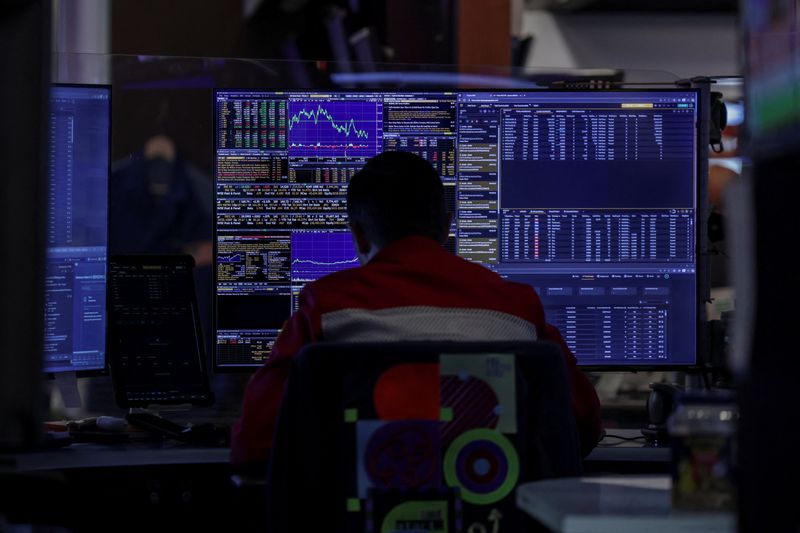
U.S. equity funds saw robust inflows in the week to October 1 on renewed bets of rate cuts, as an inflation report eased worries that a buildup in prices would push the Federal Reserve to delay policy support for a weakening labor market.
Investors bought a net $36.41 billion worth of U.S. equity funds during the week in their largest weekly net purchase since November 13, 2024, LSEG Lipper data showed.
The large-cap funds segment stood out as it drew a net of $40.75 billion in weekly inflows, the largest amount since at least 2022.
Small-cap and mid-cap funds, however, witnessed outflows to the tune of $2.59 billion and $2.28 billion, respectively.
Among sectoral funds, investors scooped up tech sector funds of net $3.04 billion after two weeks of net sales. They also added funds of $652 million and $497 million in the industrial and communication services sectors, respectively.
Investors, meanwhile, ditched a net $1.58 billion worth of bond funds, halting their 23-week-long trend of net purchases.
They divested U.S. short-to-intermediate government and treasury funds of a net $9.37 billion in their largest weekly sales since at least January 2022.
At the same time, U.S. short-to-intermediate investment-grade funds and general domestic taxable fixed-income funds gained net inflows of $1.95 billion and $1.55 billion, respectively.
Weekly net investments in money market funds, meanwhile, jumped to a four-week high of $47.08 billion during the week.
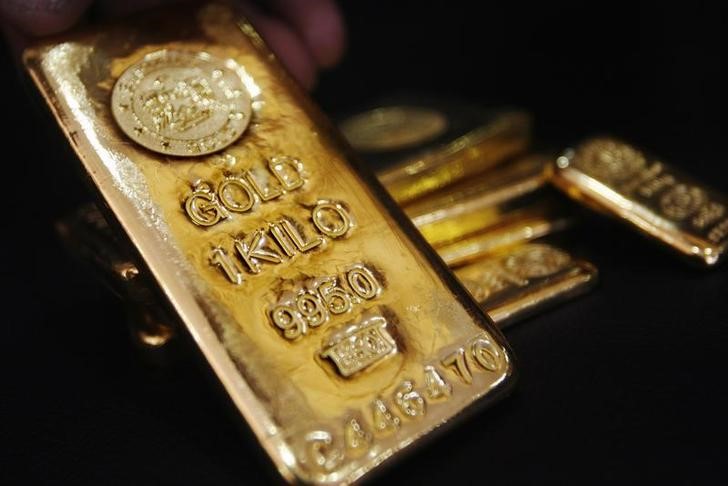
Goldman Sachs said on Wednesday that the upside risks to its $4,000 per ounce mid-2026 gold forecast have grown, highlighting two factors that could push prices beyond that level.
Gold has rallied 14% since late August to around $3,865, leaving it up 47% year-to-date. The breakout reflects renewed buying from exchange-traded funds (ETFs), central banks, and, to a lesser extent, speculative investors.
The first catalyst that could push the bullion above the $4,000 threshold is the limited role of speculative positioning in the recent rally, Goldman analyst Daan Struyven said.
Struyven argues that speculation “explains only a modest 1pp of the 14% rally since August 26, and has not increased over the last three weeks.” That suggests the surge has come from more stable long-term buyers, leaving scope for additional price gains if speculative flows eventually pick up.
The second factor is the strong surprise in Western ETF demand. Holdings rose by 109 tonnes in September, far above Goldman’s model prediction of 17 tonnes based on falling U.S. interest rates.
Struyven said this shows that the “key upside risk” it has been flagging—private investors diversifying more significantly into gold—“seems to be realizing for now.”
Because gold ETFs remain small compared with developed-market bond markets, even a minor shift in allocations away from fixed income could drive a large further increase in gold prices, the analyst added.
Goldman reiterated that gold is its “highest-conviction long commodity recommendation,” citing structurally higher central bank demand, upside risks from private sector diversification, and attractive hedging properties in market downturns.
The analysts see additional support in scenarios of global growth slowdowns or rising concerns about developed-market macro policy.

Gold prices hit a record high in Asian trade on Wednesday as the U.S. government began shutting down after Congress failed to approve fresh federal funding.
Spot gold hit a record high of $2,875.53 an ounce, while gold futures for December hit a peak of $3,903.45/oz. Spot prices traded slightly below the record, at $3,862.22 by 00:22 ET (04:22 GMT).
US government begins shutting down amid Congress deadlock over spending
A shutdown took effect from midnight, Tuesday (0400 GMT Wednesday) after an eleventh-hour spending bill backed by the Republican party failed to clear a Senate vote, amid persistent resistance from the Democrats.
The yellow metal hit a series of record highs this week amid increasing signs of U.S. political deadlock, which weighed on the dollar and kept traders biased towards safe havens.
Other precious metal prices also clocked hefty gains this week as safe haven demand spilled over from gold, with platinum and silver prices hitting 12 and 14-year highs, respectively.
Spot silver rose 0.9% to $47.0525/oz on Wednesday, while spot platinum fell 0.3% to $1,572.18/oz.
Industrial metals were also sitting on sharp gains this week, but saw some declines on Wednesday. Benchmark copper futures on the London Metal Exchange fell 0.1% to $10,278.10 a ton, while COMEX copper futures fell 0.7% to $4.8450.
Nonfarm payrolls data likely delayed
A U.S. government shutdown is expected to delay a hotly anticipated labor market reading due this week. A prolonged shutdown is also expected to disrupt future U.S. data releases.
Nonfarm payrolls data for September was scheduled to be released on Friday, but may now be delayed due to disruptions in federal agencies.
The print is expected to provide more definitive cues on the labor market– whose cooling was a major motivator of the Federal Reserve’s September rate cut.
Doubts over more rate cuts also crept into markets this week, following a slew of hawkish comments from Fed officials.
Dallas Fed President Lorie Logan flagged heightened caution over future interest rate cuts, stating that the labor market will need to deteriorate further for the central bank to consider more rate cuts.
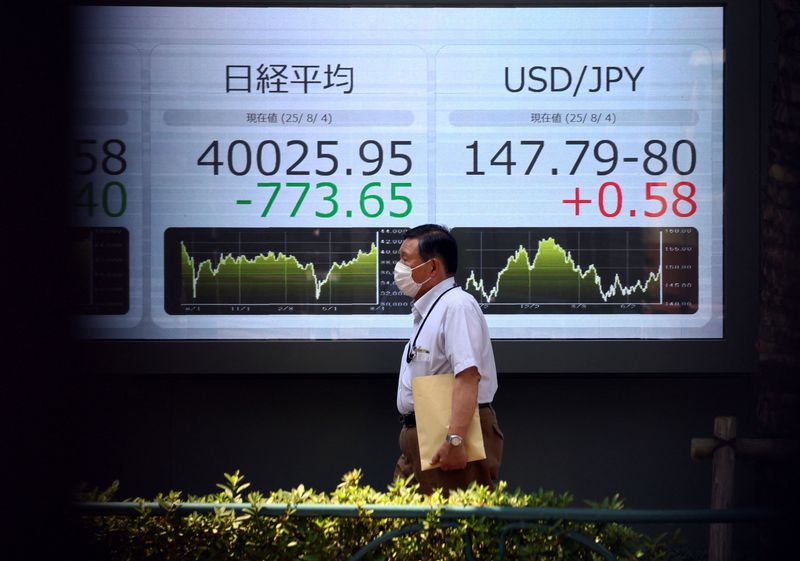
A note of caution took hold of world markets on Tuesday, with the dollar and equities slipping and gold briefly hitting new record highs on concern a U.S. government shutdown could delay key jobs data.
The dollar was broadly weaker, European stocks dipped and U.S. equity futures pointed to a weak open on Wall Street as Washington braced for a fast-approaching government shutdown as Republicans and Democrats appeared unlikely to reach an agreement that would extend funding past a midnight deadline.
A government closure would delay the issue of Friday’s key employment numbers, putting the spotlight on the Labor Department’s JOLTS report on August job openings due later on Tuesday. It could also complicate the outlook for the Federal Reserve, which cut rates earlier this month.
SHUTDOWN COULD LEAVE FED WITHOUT KEY DATA
"We are seeing a bit of concern about how the next few days play out, it seems like both sides are accepting that a shutdown is inevitable," said James Rossiter, head of global macro strategy at TD Securities in London.
"The worry here is that if there is a shutdown, it could be long and if we don’t get Friday’s jobs report or the next CPI number, where does the Fed sit?" he said, referring to U.S. inflation data.
The pan-European STOXX 600 index was last down around 0.1%, while Japan’s Nikkei closed down 0.25%. MSCI’s broadest index of Asia-Pacific shares outside Japan, however, rose almost 0.5%, poised for a gain of over 5% this month.
China’s blue-chip CSI300 Index also rose almost 0.5%, set for a fifth straight month of gains in its longest such streak since October 2017.
With U.S. stocks looking set to end September more than 3% higher and European shares up almost 1% this month, overall sentiment towards equities remained upbeat.
"We’ve actually just decided to increase our weightings in equities further," said Shaniel Ramjee, co-head of multi-asset at Pictet Asset Management.
"The earnings picture has recovered quite materially at the same time that global central banks are still cutting interest rates and global growth is fine."
Australia’s dollar added to gains after the central bank held policy rates unchanged, as widely expected, and oil prices fell over 1% on prospects for greater production by OPEC+, while China’s manufacturing activity shrank for a sixth month in September.
A STELLAR MONTH FOR GOLD
U.S. shutdown worries added to gold’s stunning rally. The precious metal briefly hit a new record high of $3,820 per ounce before trading lower on the day. Still, it has gained over 10% in September - on track for its biggest monthly percentage gain since July 2020.
Without a deal, a U.S. government shutdown would begin from Wednesday, the same day new U.S. tariffs are set to take effect on heavy trucks, patented drugs and other items.
The White House announced revised tariffs on furniture and cabinets late on Monday that are due to kick in on October 14.
All this left the dollar on the defensive.
The U.S. currency was down 0.4% at 147.98 yen, the euro was up 0.1% at $1.1742, while the Swiss franc and pound were also a touch firmer against the dollar.
The dollar index was last down 0.1% on the day and set to end September little changed on the month.
The yen could emerge as an outperformer as a hedge to a U.S. government shutdown, ING currency analysts said in a note.
The U.S. JOLTS report is the first of several indicators expected ahead of the September employment report due Friday that is considered key to the Fed’s calculations for the timing of rate cuts.
A protracted government closure could leave the Fed flying blind on the economy when it meets on October 29, however.
Analysts expect JOLTS to show job openings held firm at about 7.18 million in August.
Data released on Tuesday showed China’s purchasing managers’ index rose to 49.8 in September from 49.4 in August, below the 50-mark separating growth from contraction.
It suggested producers are waiting for further stimulus to boost domestic demand, as well as clarity on a U.S. trade deal.
Elsewhere, the Reserve Bank of Australia left its cash rate steady at 3.60%, saying recent data suggested inflation might be higher than forecast in the third quarter and that the economic outlook remained uncertain.
In Europe, data showing inflation rising in four key German states had limited market impact.
Oil stayed weaker due to an anticipated production increase by OPEC+ and the resumption of oil exports from Iraq’s Kurdistan region. Brent slipped 1.25% to $67.11 per barrel and U.S. crude fell 1.25 % to $62.66.
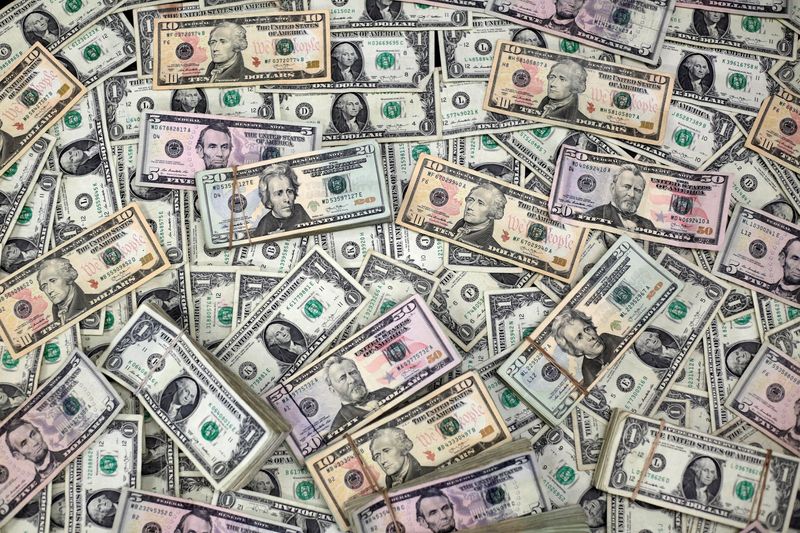
The U.S. dollar weakened on Monday, as investors eyed the prospect of a federal government shutdown as well as a slate of fresh U.S. economic data points this week.
By 05:35 ET (09:35 GMT), the U.S. dollar index, which tracks the greenback against a basket of currency peers, had fallen by 0.2% to 97.92.
Attention is turning to the unveiling of September’s nonfarm payrolls report on Friday, which could provide a glimpse into the state of the American labor market.
Supporting a cooling jobs picture has been a major focus for Federal Reserve policymakers. When the central bank slashed interest rates by 25 basis points earlier this month, officials widely suggested that a need to prioritize the slowing employment situation over signs of sticky inflation.
A collection of rate projections from the Fed also showed that many members are anticipating further drawdowns before the end of the year. In theory, cutting rates can spur on investment and hiring, albeit at the risk of driving up prices.
Economists are anticipating that the U.S. added 51,000 roles this month, compared to 22,000 in August. The unemployment rate, meanwhile, is tipped to equal August’s level of 4.3%.
Observers have predicted that, given elevated inflation data, a strong jobs report could persuade the Fed to roll out further rate cuts at a more measured pace.
Traders are currently pricing in roughly 40 basis points of Fed easing by the end of 2025, around 25 basis points below the level seen earlier this month. This slight pullback in expectations for Fed rate cuts, helped give lift to the dollar last week.
"A jobs number [less than] 75,000 will probably keep the Fed on track for a [...] cut [at its next meeting on October 29], but something [greater than] 115K with the core PCE just below 3% could spur" Fed Chair Jerome Powell and his colleagues to skip a reduction at the gathering, analysts at Vital Knowledge said in a note.
Yet worries remain that a possible U.S. government shutdown this week may delay the publication of the jobs numbers.
Congressional lawmakers are currently facing an impending deadline to pass a stopgap funding bill before the fiscal year ends on Tuesday. If the federal government would enter its 15th partial shuttering since 1981.
Republicans currently control both chambers of Congress, although the votes of some opposition Democrats would be needed to pass the legislation. However, Democrats have so far rejected a short-term bill, calling for any potential bill to reverse Republican reductions to health care programs.
Leaders from both parties in Congress are due to meet with President Donald Trump -- a Republican -- at the White House on Monday to discuss the matter. Speaking to Reuters over the weekend, Trump said he has "the impression" that Democrats may want to reach an agreement.
Elsewhere, analysts are keeping tabs on a legal battle over the possible dismissal of Fed Governor Lisa Cook by the Trump administration, which have exacerbated concerns over the independence of the central bank.

